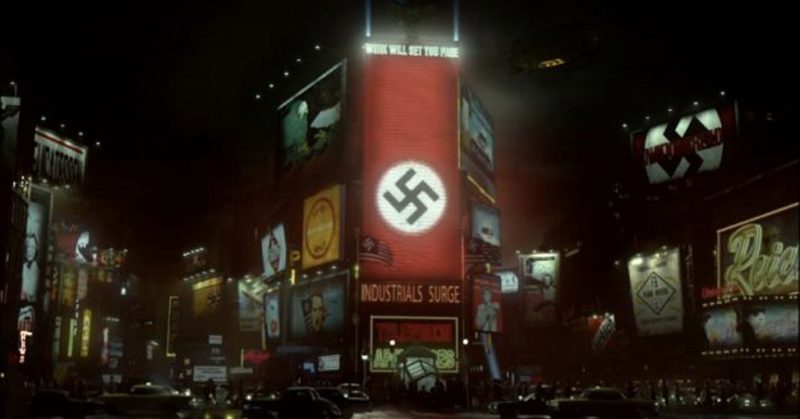In the popular television show, The Man in the High Castle, Japan and Germany have won World War Two, and America is split between the two occupying powers. The show is set in this terrifying alternative vision of the early 1960s. The first season focuses on life in America, the struggles of the resistance against the ruling “Greater Nazi Reich,” and the political machinations and power struggles between the Nazis and the Japanese, who maintain an uneasy peace across the East-West partitioned North American landmass. The show is loosely based on the 1962 novel of the same name by popular American sci-fi writer Phillip K. Dick.
Season two brings in the vision of Europe under the rule of the victorious Reich, and the terrifying vision of Hitler’s Germania is brought to life in vivid and disturbing detail through the creation of the architectural changes which Hitler had planned for Berlin if the Axis were to win the war.
A huge amount of research and work ent into the creation of these sets. Of particular interest was the building is known as the “Volkshalle,” a prodigious domed structure that Hitler himself had envisaged. This is the building in which Hitler holds his rallies and the creation of this building were a huge challenge.
Hitler had big dreams for the world capital, Germania, which he intended to build. Plans drafted by the architect Albert Speer are available for this grandiose scheme that was to be created in the middle of Berlin. Using the book, Albert Speer Architecture: 1932-1942, the effects supervisor and production designer for the series, Andrew Boughton, tried to envisage what modern day Berlin would look like, had Hitler won in the Second World War. Lawson Deming, the Visual Effects supervisor for the series, used Boughton’s ideas, sketches, designs, and plans, and his own research, to build digital images that would seamlessly integrate with the sets that had been built.
A recently released video from Barnstorm VX shows how digital technology was used to create these incredible spaces, and place the actors within them. The Volkshalle presented a special series of problems, especially the large dome that Speer had designed, which could not be faithfully replicated, and a balance had to be made between historical accuracy and what worked within the boundaries of the film. All that Deming and his crew had to work with was a photograph of a roughly built model along with the blueprints, but changes had to be made to ensure that the digitally created building matched the rest of the design cues from the show.
Their first attempt to create the immense dome simply did not work on the screen. As Deming explained, “It just didn’t work on screen because the scale of the physical space inside the dome is incomprehensible and there are few human-sized details to help sell it. The only real world frame of reference we had was the Pantheon, on which the interior dome design is based, but the Pantheon dome is 1/8 the size of the Volkshalle, and if you look at photos of that dome, many of them look artificial, like a painting. So how in the world were we going to make an 800-foot marble dome that didn’t look fake?”
While Deming and his team had to manipulate many of the details to fit, they ensured that the digital model they created was historically accurate and all the signs, decorative inserts, and lighting they used to help convey a sense of size were periodically correct. They used the sculpture by Arno Breker that stands outside the Reich Chancellery as inspiration for this.
Blending historical accuracy with hypothetical fiction is not an easy task and portraying this alternative universe accurately was a huge challenge. This is nothing like science fiction in which you can allow your imagination to run wild; the 1960s did exist but trying to blend that reality with what might have been is demanding and requires meticulous attention to detail. A good example would be the motor vehicles that were around in 1960; they would not have looked as they did so the show’s designers had to try and imagine what they might have looked like; an exercise that stretched their imaginations to the limit. Also, buildings had to be created as many building owners were not happy to allow their buildings to be used as a set and then covered with Nazi swastikas, Gizmodo reported.
This series has presented all the creative members of the production teams with a serious challenge to portray a possible alternative universe based upon a real one, but the final effect is simply stunning. This show is well worth watching, though it pulls no punches, and can be deeply disturbing at times.
So far, The man in the High Castle has won numerous awards (including for the visual effects) and has been nominated for many more. The series is ongoing, and if you haven’t already, you should give it a watch.
Check out this video to get an idea of just how much work went into creating the spectacular visual effects set pieces.
http://www.youtube.com/watch?v=tsS3HOePV08
